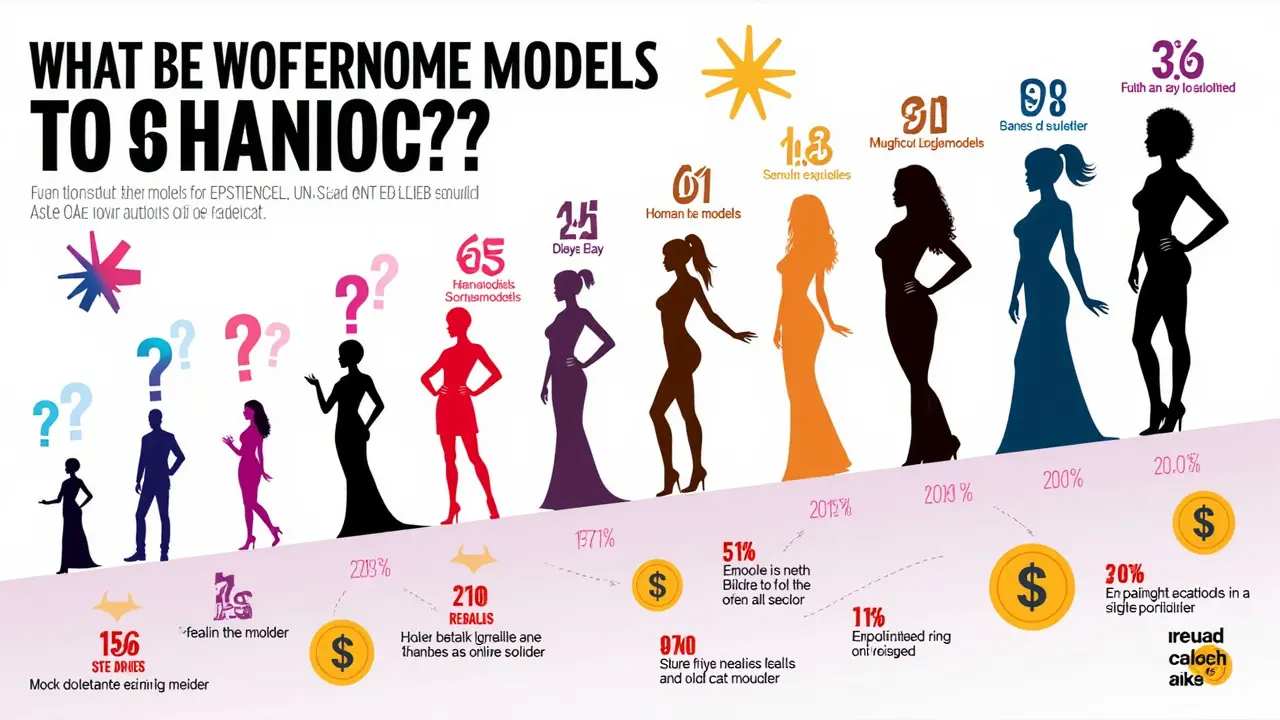If you think modeling is all champagne, fancy hotels, and front-row seats at Fashion Week, let’s hit pause right there. Most models hustle hard, waiting tables between castings or riding packed subways to auditions—even some who walk big runways. The dream is real, but so are the pressures. Before you start practicing your best runway walk in the mirror, curious if you can actually pay rent with this gig, you should know: very few make it big, but that doesn't mean you can't carve out a good living.
What Does 'Living Off Modeling' Really Mean?
Let’s get this straight—living off modeling means covering your rent, groceries, health insurance, and a treat or two at your favorite coffee shop, purely from your modeling gigs. Not a side hustle, not dipping into savings, not living off someone else. Just your modeling income keeping the lights on. For the top 1%—think supermodels like Gisele or Kendall Jenner—living off modeling means mansions and million-dollar contracts. But for most, it's about piecing together enough gigs to pay for basics, plus a little extra, with a rollercoaster of ups and downs.
In the US, the Bureau of Labor Statistics (BLS) placed the median annual wage for models at $37,690 as of 2023, but that’s a number clouded by part-time jobs, second incomes, and wild pay gaps. Just like pro athletes, a tiny handful break the bank, while the rest fight for gigs that can pay anywhere from $100 for a half-day catalog shoot to thousands for a major campaign. Some work every week, others go a month without a call. So, yes, it’s possible to live off modeling—but plan for lean times, too.
The Facts—How Models Actually Make Money
This is where things get interesting. Sure, “fashion model” comes to mind—runway, magazine covers, designer campaigns. But not every model struts the catwalk in Paris. There are fittings models, hand models, fitness models, plus models, commercial models, and even parts models who just show off hands, hair, or feet. Commercial work (think: ads, catalog shoots, e-commerce) generally pays more steadily than fashion jobs. Fitness and plus-size modeling are two areas growing fast, opening doors for folks who don’t fit the ‘classic’ mold.
Many models are freelancers. They work on short-term contracts, often arranged by an agency who takes 10-20% of each fee. Agencies get paid only when you do. Big agencies in places like New York book the highest-paying jobs, but smaller or boutique agencies can still get you work—think regional campaigns or online brand shoots. And then there’s the world of 'influencer' modeling, where brands pay for posts and stories on social media—sometimes a few hundred, sometimes thousands, depending on your following. The catch? No work, no money. Unlike a salaried job, if you take a week off or get sick, your income dries up. And if a shoot gets canceled last minute (it happens), you don’t always get paid for lost time.
One of the most surprising facts: Some top models actually make more from licensing their name, product collaborations, or brand ambassadorships than from runway or fashion shoots. You don’t have to be a household name to do this—if you build up your own audience, smaller deals can add up. The real trick is thinking beyond just the camera and getting entrepreneurial with your brand.

Tough Truths—The Real Costs and Unstable Income
The not-so-glam side? Expenses add up fast. Agencies often advance money for travel, comp cards (those printed portfolios models hand out), and sometimes even rent. But those advances aren’t gifts—they come out of your future earnings. If you don’t book enough work, you might end up owing instead of earning. Models also shell out for gym memberships, nutrition, skincare, and wardrobe “basics” for castings (black tees, skinny jeans, high heels). And training’s rarely free—runway classes, posing workshops, even media coaching can eat away at your paycheck. If you go overseas, you might work for months before seeing a dime, thanks to agency policies or slow-paying clients.
No one’s paying your health insurance or retirement plan. There’s no sick pay, no paid vacation days—not even reimbursement for a lost suitcase on your way to Milan. Rookie mistake? Not saving for taxes. Since most jobs are freelance or contract, you’re responsible for managing your money and filing taxes. Miss a few big gigs, get injured, or lose clients to someone new and the bills don’t wait. The models who survive long-term are great at budgeting, hustling for regular side gigs (think: teaching, influencing, acting), and keeping their career options open.
Money can be random. You might make $5,000 in one week on a beauty campaign, then not work for two months. Some years are huge, others a wash. Building a safety net—six or even twelve months’ rent—isn’t just smart, it’s survival. Models share stories of living with six roommates, renting couch space, or moving home during a dry spell. It's not shameful—it's common.
Hidden Perks and Smart Tips—Surviving the Modeling Game
It’s not all doom and gloom. If you play the modeling game right, some serious perks come your way—travel (hello, Tokyo shoots!), industry connections, and sometimes free products. If you’re strategic, you can build a personal brand, branch into acting, blogging, content creation, or even start your own agency one day. The trick? Diversify—don’t put all your eggs in one shoot. Models who stick around (and yes, many do) say treating the job like a business makes a difference. Set goals. Track income. Follow up on unpaid invoices—you’d be surprised how often you have to chase a paycheck!
Always ask agencies and clients about payment timelines—charm helps, but stay businesslike. Invest in reliable gear (like a good camera for self-shoots), learn some basic photo-editing, and seriously, don’t underestimate the power of networking. Go to events, connect on social media, and treat every job, big or small, as a resume builder. And about social media: build it up, but don’t fake followers—brands can spot that from a mile away. The more stuff you can do—styling, hair, makeup, even retouching—the more valuable you become. Just don’t forget to have a life outside of modeling too. Burnout is real, even when your job looks dreamy on Instagram.
Think about health—mental and physical. Many models talk about the toll of constant rejection, weird beauty standards, or toxic environments. Find friends outside the business, have a support system, and be okay saying no to shady gigs. If something sounds too good to be true, it usually is. And don’t forget the contracts—read them, and if you don’t understand a clause, ask. Agencies exist to help, but they’re businesses first. Looking out for you is your job first and foremost.

Can You Actually Pay Your Bills as a Model?
So, can you kick back and relax, knowing your next Vogue cover will keep you afloat for months? Probably not—at least, not right away. It’s absolutely possible to pay your bills as a model, especially if you’re hustling across different types of gigs and managing your side income well. The most successful working models hustle like freelancers—chasing commercial shoots, social media deals, brand collaborations, and acting or presenting work. They treat modeling like a small business, watching expenses as closely as their looks, and always thinking about what comes next, not just the next gig.
There are models who work reliably, especially in big cities like New York, LA, London, or Paris, and even more steady gigs in commercial markets, like catalog or retail. Ask around and you’ll hear: some models are teachers, fitness trainers, or own little online businesses on the side. If you want stability, build a diverse work life, don’t count on runway-only jobs, and treat every gig as a step, not an end game. There are still older models working after 30, 40, even 50, thanks to niches like mature or commercial modeling—proving you don’t have to hang up your heels after one fashion season.
Here’s the biggest tip most pros share: don’t go into modeling just for fame or money. Go in for the experience, the challenge, the doorways it opens, and the connections you make. Money can be good—even great—but it’s rarely easy, steady, or without compromise. If you learn the business, save wisely, and hustle smart, you really can live—maybe not lavishly, but honestly and sometimes even comfortably—off the wild, weird, and ever-changing world of modeling.




